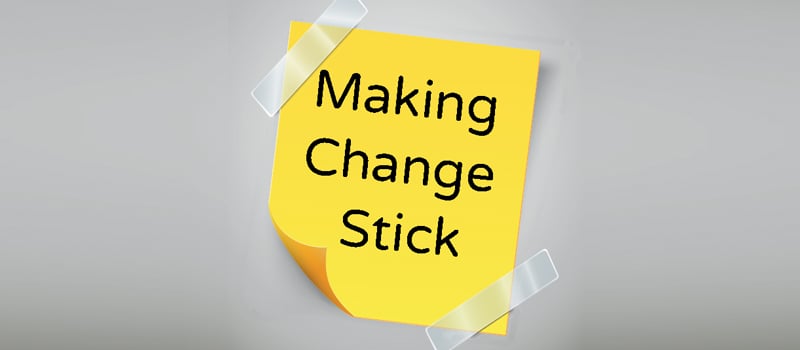1. The Spark That Came Out of Nowhere
I was driving home when Simon Sinek’s A Bit of Optimism podcast queued up an episode with Dan Buettner. The topic was longevity hot-spots — why some communities stay healthier for decades — nothing about Software Development :). Halfway through, Buettner quoted from his book "Blue Zone Challenge":
If you take your toaster off your kitchen counter, you'll weight 3-4 pounds less in 2 years compared to your counterpart who keeps the toaster on your counter. ... We eat the food we see ... Put in a fruit bowl, a really nice fruit bowl in the middle of your kitchen, having a junk food drawer instead of leaving the chips out... All that makes a measurable difference how much you eat over the course of a day...
- Dan Buettner
It landed harder than any leadership quote I’d heard that week.His point was simple: people pick what’s in front of them. If the healthy option is closer, you don’t need more will-power; the environment does the heavy lifting!
2. Why the environment beats will-power (and PowerPoint)
Most teams—mine included—try to change behaviour with things like:
- a new policy,
- a ten-step checklist,
- or another presentation with stock photos of climbers and lightbulbs.
These tools are good for kicking off, but not enough to sustain, as they rely on everyone remembering to do the right thing every single time. Real life is noisy; memory and will-power run out before lunch.
A 'nudge' embedded in the surroundings works when nobody’s paying attention:
- Visual: what’s in front of your eyes grabs your focus.
- Physical/digital distance: one extra click or one fewer click tilts behaviour.
- Defaults: the thing that happens automatically becomes the thing people accept.
Seat-belt chimes, two-factor prompts, even the little “Are you sure?” button before deleting a branch—same idea to be honest ...
3. The Agile Board Experiment
Back at the office, two habits were derailing successful sprints in my teams:
- “Ship it first, fix it later” - Defects lingered over multiple sprints, while team was delivering features
- “Start coding, we’ll review tomorrow” Pull-requests reviews piled up, so half finished sprints were the norm.
I didn’t fancy another useless all-hands lecture, I proposed to tinker with the Kanban board instead.
- Created a dedicated swimlane on the top for Defects
- Gave Waiting for Review its own column.
- Changed daily stand-up script from "did this, will do that, something blocks me" to 'walking the board' from right-to-left / top-to-bottom
What happened?
- New bugs were fixed during the same sprint instead of “whenever”
- Median review time dropped from more than a week to two days
- Morale went up because work stopped stalling in limbo
By adjusting the team’s visual management tools (“their environment”) we managed to change common derailing habits -> The board made the right action the easy action!
4. Other Everyday Nudges That Cost Nothing
- Code Linting: Fail the pipeline on missing test IDs; developers write tests because it’s quicker than fighting CI.
- Slack Channels: Rename
#random to #wellbeing and watch the conversation drift from memes to mental-health tips.
- Meeting Rooms: Remove chairs from a 15-minute stand-up space; you’ll finish in ten.
- Email Filters: Auto-archive release notes older than a week so only current versions stay visible.
Each change is tiny, reversible, and specific to one behaviour. Stack enough of them and culture shifts without anybody memorising the 'Five Pillars of Excellence'.
5. Designing Your Own Nudge
- Step 1 – Pick One Painful Habit: Late reviews, unclear ownership, context-switching — choose the pebble in your shoe, not the mountain on the horizon.
- Step 2 – Map the Current Loop: Trigger → Action → Reward. Where does friction belong? Where is convenience?
- Step 3 – Tweak the Environment: Make the better path obvious and shorter; make the old path longer or invisible. Rename a column, pre-fill a template, move a button, you name it...
- Step 4 – Prototype for One Sprint: Tell the team, “Humour me for two weeks; if it does not work, we roll back.” Low stakes unlocks buy-in.
- Step 5 – Measure Something Real: Cycle-time, lead-time, mean-time-to-restore — pick a metric that changes in weeks, not quarters.
- Step 6 – Iterate or Kill: If the nudge moves the needle, lock it in. If not, kill it quickly and try the next idea.
6. Pitfalls to avoid
- Nudge, Don’t Nag. A pop-up that appears every hour is a nag; a pull-request template that auto-adds reviewers is a nudge.
- Context Is Everything. What works for a five-person startup will annoy a 50-person department.
- Involve the Team Early. People support what they help design. A sketch on a whiteboard invites more useful criticism than a finished slide dropped on them at 4 p.m.
- Beware Cosmetic Change. Renaming columns without altering flow is lipstick on a backlog.
- Don’t Stack Nudges Blindly. Two good nudges can cancel each other — like stricter WIP limits colliding with emergency bug lanes.
7. The compounding effect
One small tweak won’t rewrite culture. Ten small tweaks over a year will, because each success builds trust that the next change is worth trying. The team stops waiting for permission and starts suggesting their own experiments (real story). That’s when culture change becomes self-propelling.
8. Your Turn – A Call to Action
Try it this week:.
- Identify one team habit that drags you down.
- Adjust the environment — board, tooling, seating, Slack, whatever — so the better behaviour is the obvious, low-friction option.
- Run it for two weeks and see what moves.
If you’d like another pair of eyes on your idea — or a nudge designed for your context — feel free to reach out. I’m happy to help turn “fruit-bowl thinking” into practical, team-specific experiments.


